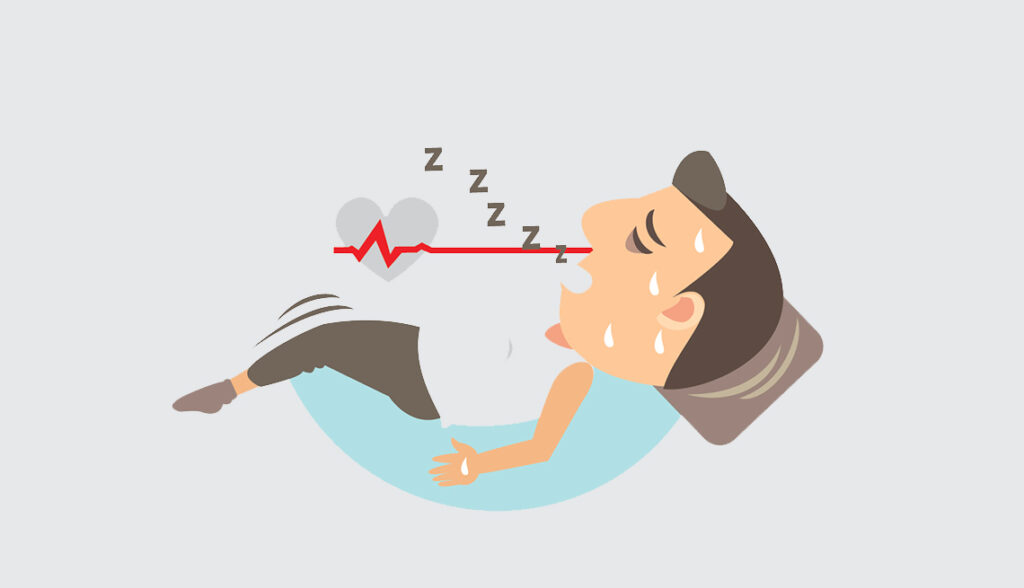Understanding Apnea: Exploring Disrupted Breathing Patterns
What is Apnea? Apnea refers to a temporary cessation or interruption of breathing, often occurring during sleep. This condition can lead to significant health risks and may be classified into various types based on its duration and underlying causes.
Types of Apnea There are several types of apnea, including:
- Obstructive Sleep Apnea (OSA): The most common form of sleep apnea, OSA occurs when the muscles at the back of the throat relax excessively during sleep, causing the airway to become blocked or narrowed.
- Central Sleep Apnea (CSA): CSA occurs when the brain fails to send signals to the muscles responsible for breathing, resulting in temporary pauses in breathing during sleep.
- Mixed Sleep Apnea: Mixed apnea involves a combination of obstructive and central apnea episodes during sleep.
Symptoms of Apnea Symptoms of apnea may vary depending on the type and severity of the condition but can include:
- Loud Snoring: A common symptom of obstructive sleep apnea, often accompanied by gasping or choking sounds during sleep.
- Pauses in Breathing: Witnessed by a bed partner or family member, episodes of interrupted breathing during sleep may be a hallmark symptom of sleep apnea.
- Excessive Daytime Sleepiness: Individuals with untreated sleep apnea may experience persistent fatigue, drowsiness, or difficulty concentrating during the day.
- Morning Headaches: Waking up with headaches, dry mouth, or a sore throat may indicate disrupted sleep patterns associated with sleep apnea.
- Irritability or Mood Changes: Sleep disruption and oxygen desaturation during apnea episodes can lead to irritability, mood swings, or feelings of depression.
Causes of Apnea The causes of apnea can vary depending on the type and underlying factors, but common causes may include:
- Obesity: Excess body weight, particularly around the neck and throat, can increase the risk of obstructive sleep apnea by narrowing the airway during sleep.
- Anatomical Factors: Structural abnormalities such as enlarged tonsils, a deviated septum, or a small jaw can contribute to airway obstruction and apnea episodes.
- Neuromuscular Conditions: Conditions that affect muscle tone or respiratory control, such as muscular dystrophy, amyotrophic lateral sclerosis (ALS), or Parkinson’s disease, can increase the risk of central sleep apnea.
- Medications: Certain medications, such as sedatives, muscle relaxants, or opioid pain medications, can suppress respiratory drive and contribute to apnea episodes.
- Family History: A family history of sleep apnea or respiratory disorders may increase the likelihood of developing the condition.
Risk Factors for Apnea Risk factors for apnea may include:
- Age: The risk of sleep apnea increases with age, particularly in middle-aged and older adults.
- Gender: Men are more likely than women to develop sleep apnea, although the risk for women increases after menopause.
- Smoking: Smoking can increase inflammation and fluid retention in the airway, contributing to obstructive sleep apnea.
- Alcohol and Sedative Use: Alcohol and sedatives can relax the muscles in the throat and interfere with normal breathing patterns during sleep.
Diagnosis of Apnea Diagnosing apnea typically involves:
- Sleep Evaluation: A comprehensive evaluation of the patient’s sleep patterns, symptoms, medical history, and risk factors for apnea.
- Sleep Study: Polysomnography, a diagnostic test performed in a sleep laboratory, records various parameters such as breathing patterns, oxygen levels, heart rate, and brain activity during sleep to diagnose sleep apnea and assess its severity.
- Home Sleep Test: In some cases, a portable home sleep apnea test (HSAT) may be used to monitor breathing patterns and oxygen saturation levels during sleep in the comfort of the patient’s home.
Pharmacokinetics and Pharmacodynamics In the context of apnea, pharmacokinetics refers to how medications used to treat sleep apnea are absorbed, distributed, metabolized, and excreted by the body. Pharmacodynamics refers to how these medications exert their effects on the respiratory system and sleep architecture.
Pharmacological Treatment Pharmacological treatment options for sleep apnea may include:
- Continuous Positive Airway Pressure (CPAP): CPAP therapy involves wearing a mask connected to a machine that delivers a continuous stream of air to keep the airway open during sleep.
- Bilevel Positive Airway Pressure (BiPAP): BiPAP therapy delivers varying levels of air pressure during inhalation and exhalation, providing customized support for individuals with more complex breathing patterns or underlying medical conditions.
- Oral Appliances: Oral appliances such as mandibular advancement devices (MADs) or tongue-retaining devices (TRDs) may be used to reposition the jaw or tongue and keep the airway open during sleep, particularly for individuals with mild to moderate obstructive sleep apnea or those who cannot tolerate CPAP therapy.
- Medications: Medications such as modafinil or armodafinil may be prescribed to improve wakefulness and reduce excessive daytime sleepiness in individuals with sleep apnea, although they do not treat the underlying cause of the condition.
Non-Pharmacological Treatment Non-pharmacological treatment options for sleep apnea may include:
- Lifestyle Modifications: Adopting healthy lifestyle habits such as losing weight, quitting smoking, avoiding alcohol and sedatives, and maintaining a regular sleep schedule can help reduce the severity of sleep apnea symptoms and improve overall sleep quality.
- Positional Therapy: Sleeping on the side instead of the back may help prevent airway obstruction and reduce the frequency of apnea episodes, particularly for individuals with positional or mild obstructive sleep apnea.
- Behavioral Therapy: Cognitive-behavioral therapy for insomnia (CBT-I) or other forms of behavioral therapy may help address underlying sleep disturbances, anxiety, or stress contributing to sleep apnea symptoms.
Conclusion Apnea encompasses a spectrum of sleep-related breathing disorders characterized by temporary interruptions in breathing during sleep. Early recognition, diagnosis, and treatment of apnea are essential for preventing complications, improving sleep quality, and reducing the risk of associated health problems. If you or someone you know experiences symptoms suggestive of sleep apnea, such as loud snoring, pauses in breathing during sleep, or excessive daytime sleepiness, it is important to seek medical evaluation and consultation with a healthcare professional for proper diagnosis and management.




